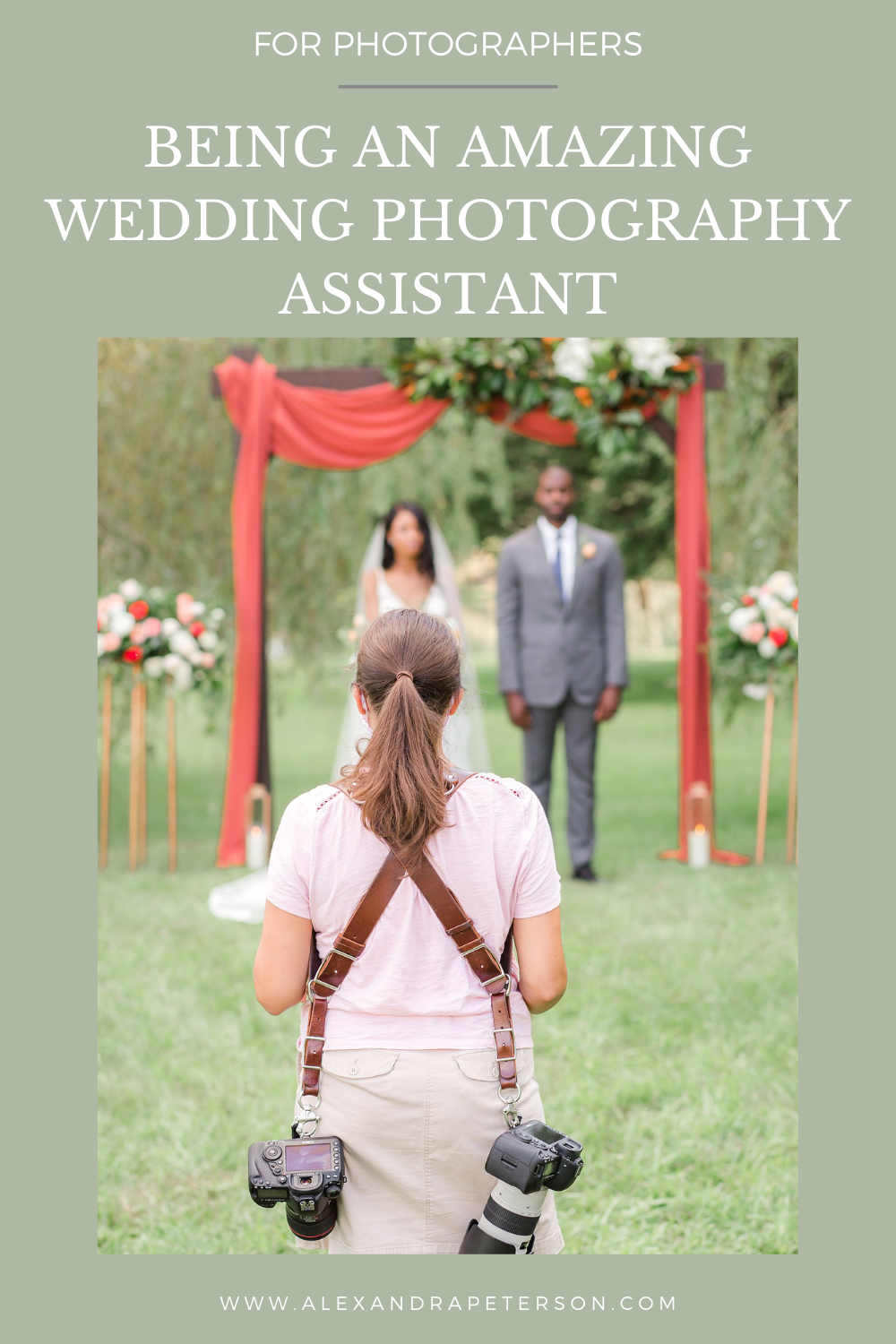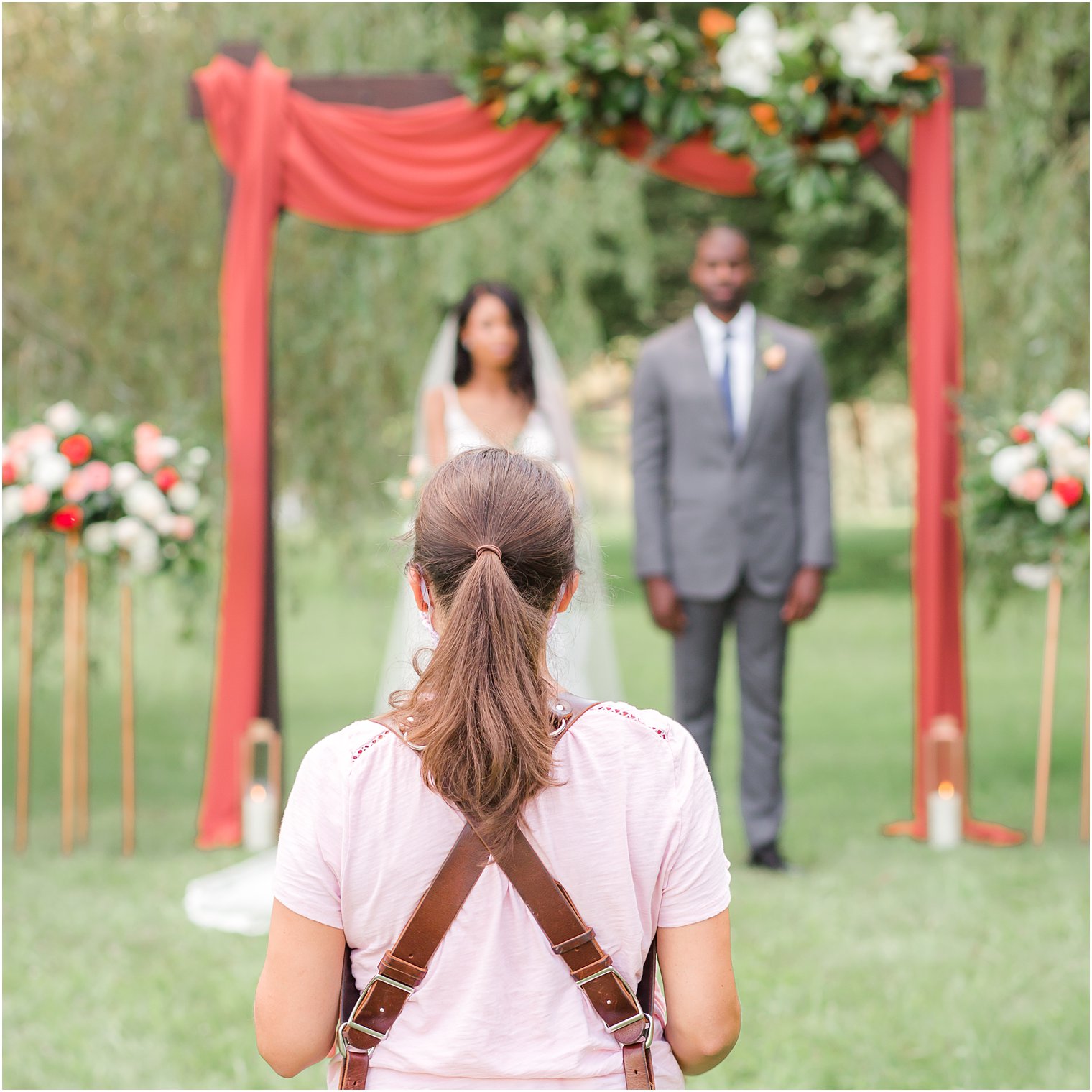Being an amazing wedding photography assistant
You’ve probably heard of wedding photography assistants before, but if you’re new to the wedding industry, you may not know exactly what it means to be an assistant, and what the advantages are to being an assistant.
A photographer’s assistant is not to be confused with a second photographer; their roles are very different! An assistant’s role is to be an extra pair of hands available for the photographer throughout the wedding day. It may involve carrying equipment, setting up flatlays, helping with lighting, running errands, fluffing the bride’s dress, keeping track of the family formals shot list, and much more. It’s not an easy job, and it’s exhausting after a 10 hour wedding day, but the benefits to starting out as an assistant to a seasoned wedding photographer go beyond a simple paycheck.
Like any industry, learning from an experienced professional and connecting with the right people, no matter the role, is how you’ll benefit the most. There is so much valuable knowledge to learn by being a wedding photography assistant (without the same stress as being the main photographer or even a second photographer on the day). You will learn so many lessons that can’t be learned from just researching online! Of course, it’s important to make a good enough impression so you can quickly move into the second photographer role, and then eventually you will be the one hiring an assistant! Being an assistant is also the perfect opportunity to discover whether wedding photography is truly for you, without investing in all the equipment first and then finding it isn’t what you imagined.
Wondering how to be an amazing wedding photography assistant? Read on!
BE PREPARED
Review the contract and guidelines the lead photographer has provided you with and be clear about all expectations for the wedding day and job you’ve taken on. Be sure to reach out to the photographer well in advance of the job date if you have any questions about processes. Don’t wait until the last minute (like the night before!!) to ask important questions.
BE PROFESSIONAL
This may seem like a no-brainer, but make sure you show up to the day like you would any other job. Check with the photographer what clothing would be best for you to wear and make sure you’re presentable and tidy. Be polite to any guests or staff that you interact with. You are a representative for the photographer and their business so you want to make sure you keep this in mind. If you leave a negative impression, it’s unlikely you will be hired again. No checking your emails or answering your phone during the day and only take a break when the photographer allows. The better impression you can give the lead photographer on the day, the more likely they will ask you to work with them again.
DON’T ADVERTISE YOUR SERVICES
As I mentioned before, you are there to support the photographer and represent their business. You do not want to undermine their hard work by handing out your own business cards. Instead, carry the photographer’s cards to hand out to anyone who asks for one. This will only do you good in the long run as your hard work will be rewarded by hopefully more assisting work and potentially then becoming second photographer.
BE MORE THAN PUNCTUAL
Never ever be late, and if you can, be early. Again, this attention to detail in being a reliable and hardworking assistant will only benefit you in the long run. Being early also allows for any issues that may arise during your travel that might cause you to be late.
SOAK IT ALL IN
Use this time as an opportunity to soak up all the information and advice the lead photographer shares with you. Seasoned photographers generally enjoy working with people who are eager to learn and excited about the work, so if they see you’re enjoying the experience they will likely want to offer you more work.
BE ONE STEP AHEAD
It really pays to have attention to detail. Don’t wait for the photographer to tell you to help with the styling of flowers, or hair in the bride’s face. Be ready to pre-empt these kinds of problems. It pays to carry your own little emergency bag of helpful tools, such as a pair of scissors, comb, bobby pins, clips, tape, blister packs, etc. Be alert to any issues that may be arising and try to resolve them (hopefully before even the bride or photographer realizes). Any stress you can take away from both of them on the day will be so appreciated. Always think about what’s coming next, be ready with any checklists for photos and get the photographer’s gear packed away quickly and neatly when needed.
BE CONFIDENT
Fake it ‘til you make it if you’re not confident, as you will be expected to help gather guests for group photos and deal with multiple people. You may be pushed out of your comfort zone, but step into the fear and get the most out of each experience that’s put before you.
“If you are interested in something, no matter what it is, go at it full speed ahead. Embrace it with both arms, hug it, love it, and above all, become passionate about it.”
– Roald Dahl
Learn More
Are you interested in breaking into the wedding photography industry but don’t know how to do it? I’d love to chat with you to help you create an action plan that will allow you to gain experience and make connections in the wedding industry. Check out my coaching sessions here.

welcome to the blog
Hello there! I'm Alex! I teach hobbyist photographers how to take better photos and professional photographers how to build a thriving business. Here I share tips and resources to help you grow. Thank you so much for visiting my blog!
categories
PHOTOGRAPHY
SOCIAL MEDIA
alex@alexandrapeterson.com
